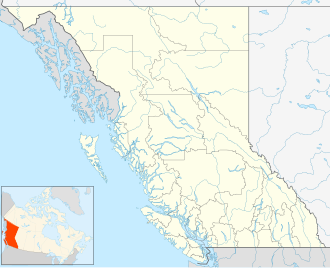History
The park was established 1954, one year after the property was donated to the province by Major J. S. Matthews, a noted Vancouver historian and City Archivist for Vancouver.
The park's name comes from Apodaca Cove, which was named to preserve the name for Bowen Island conferred by José María Narváez during his exploration and survey work in the region in 1791, Isla de Apodaca. Apodaca is a city in the state of Nuevo León, Mexico, which was named for Dr. Salvador Apodaca, Bishop of the city of Linares, who was born in Guadalajara in 1769. [2]
This page is based on this
Wikipedia article Text is available under the
CC BY-SA 4.0 license; additional terms may apply.
Images, videos and audio are available under their respective licenses.



